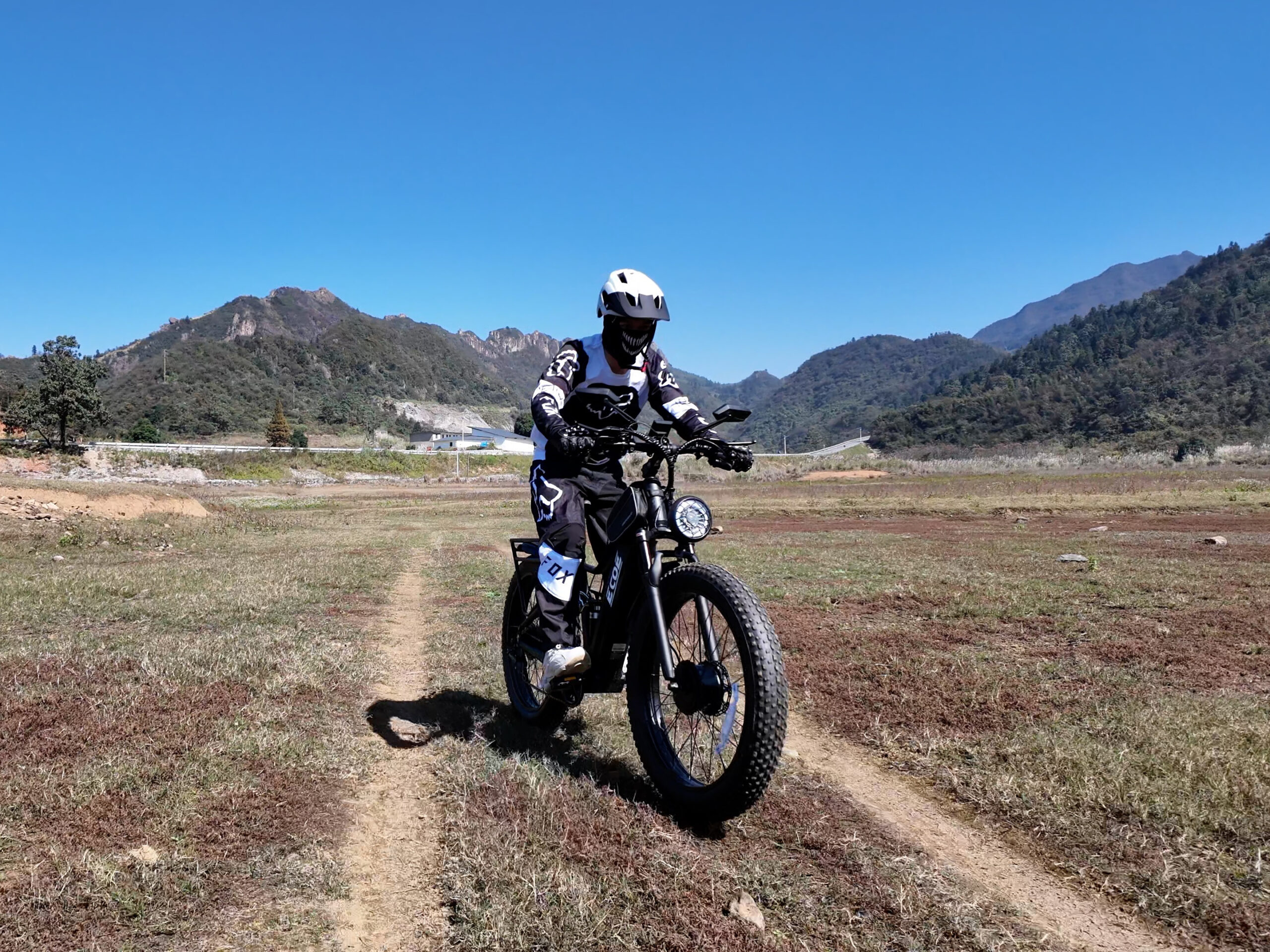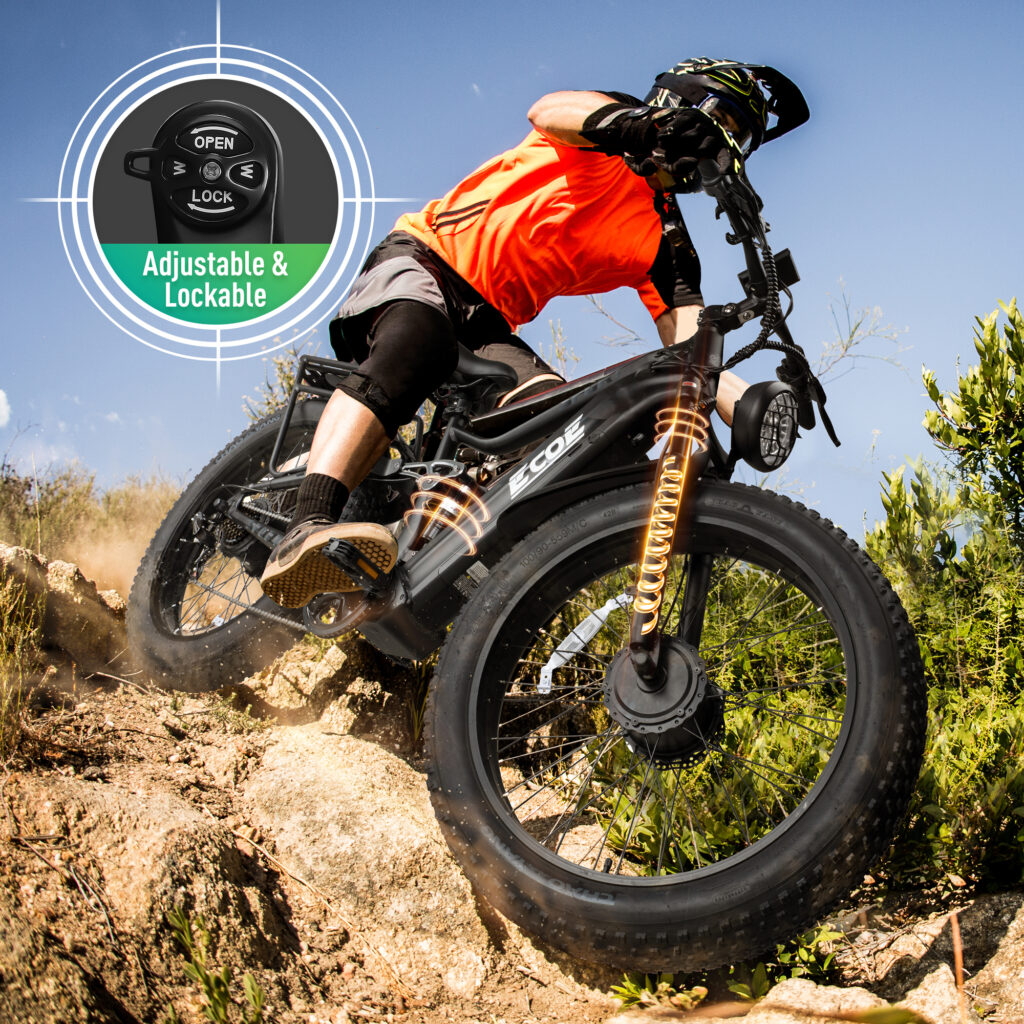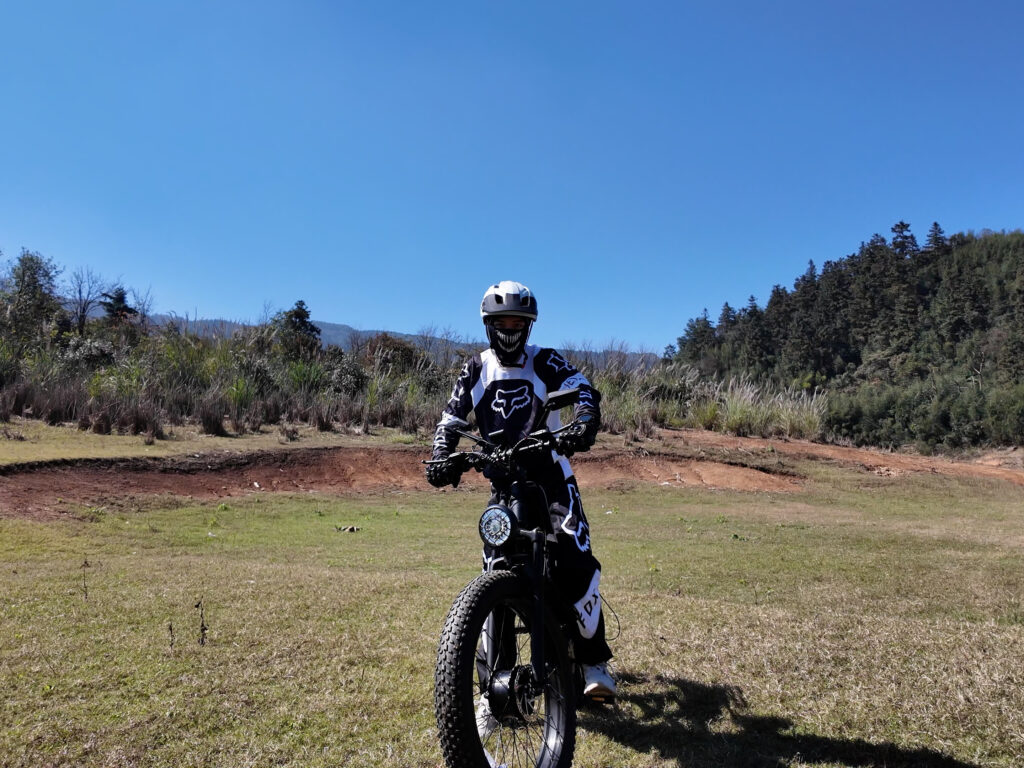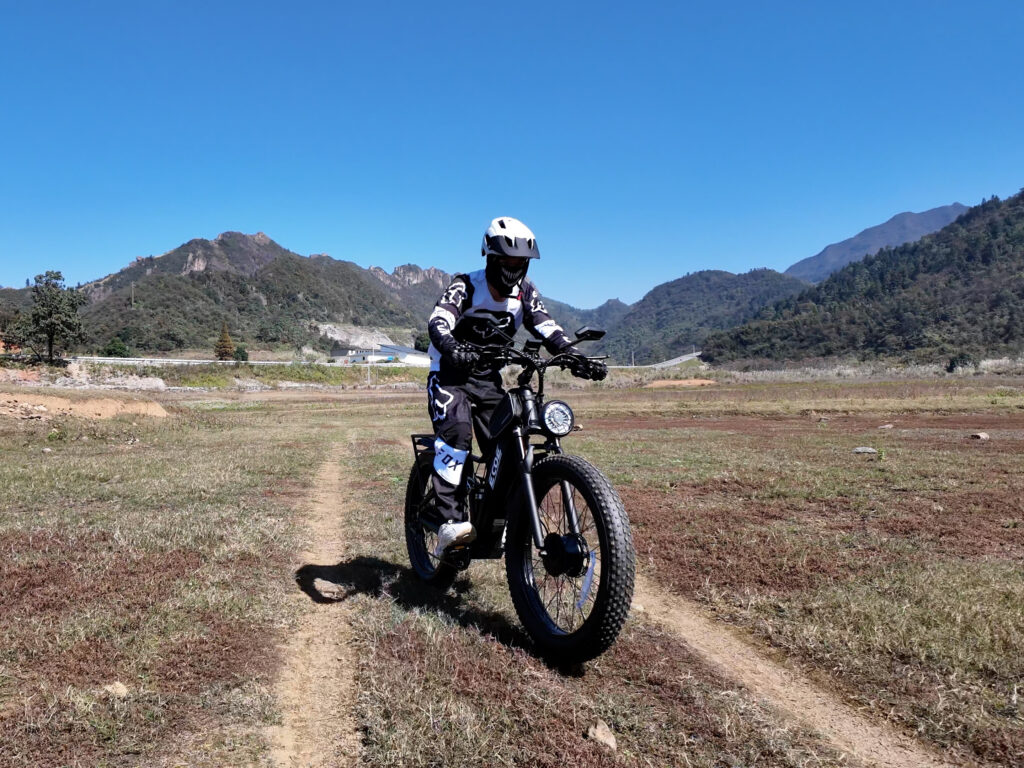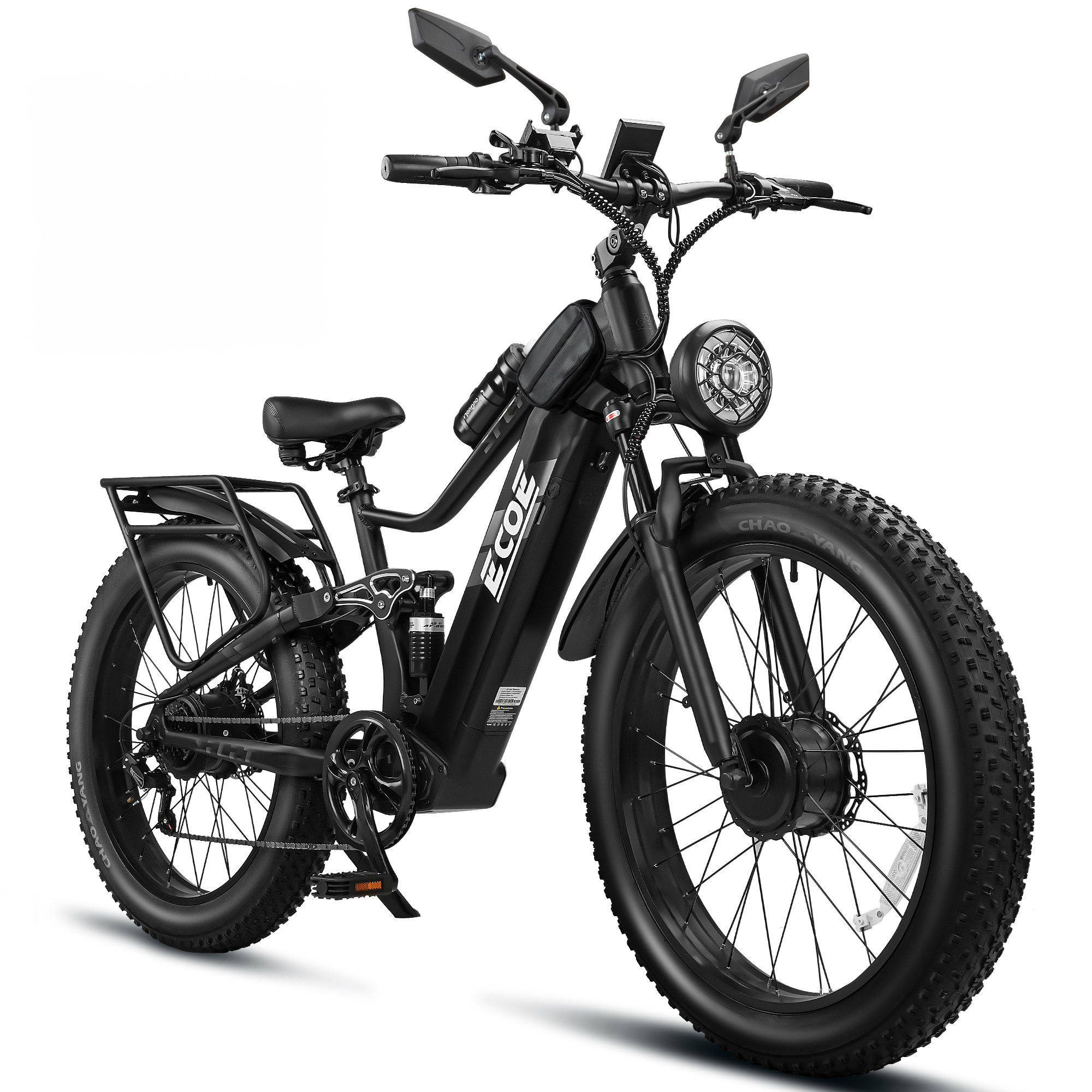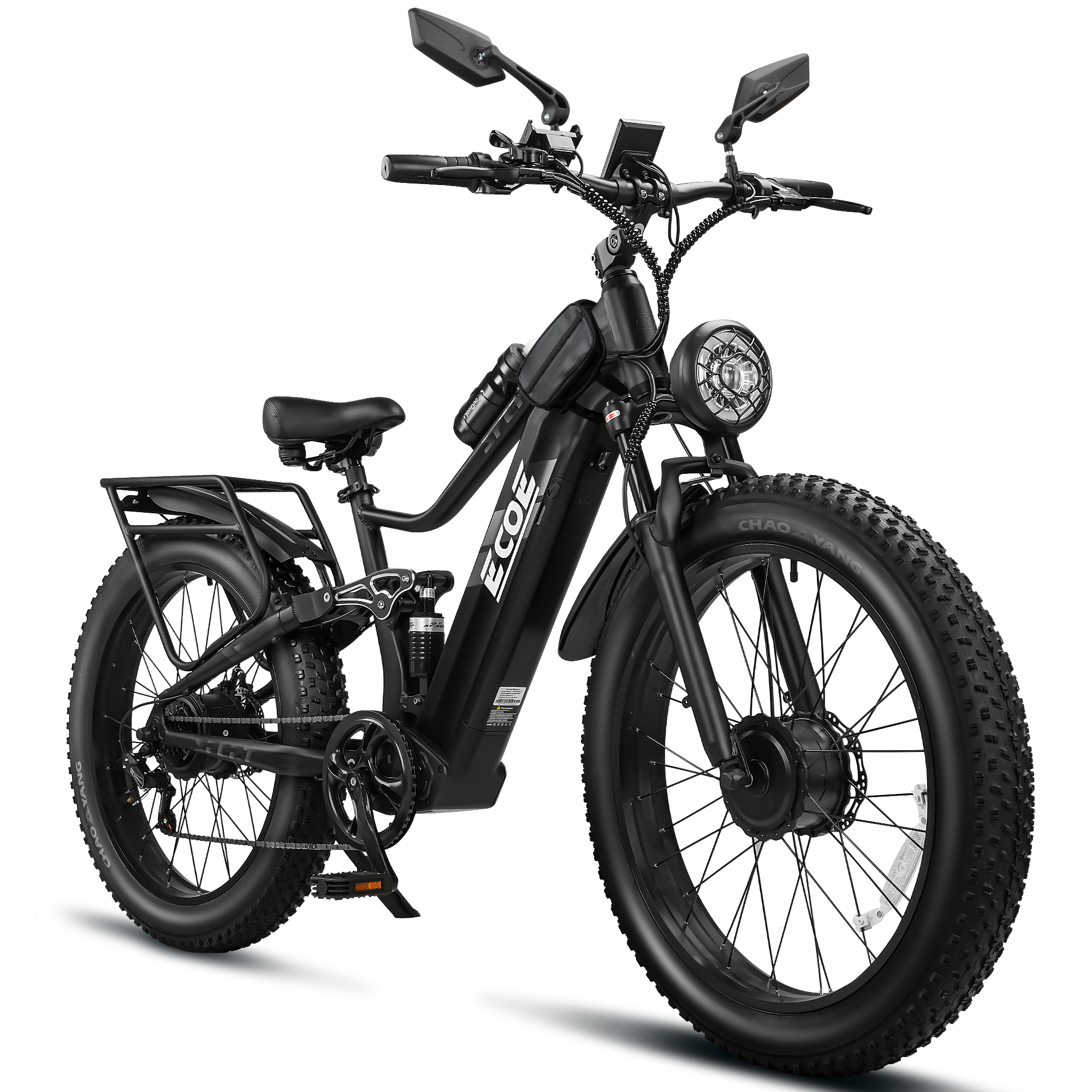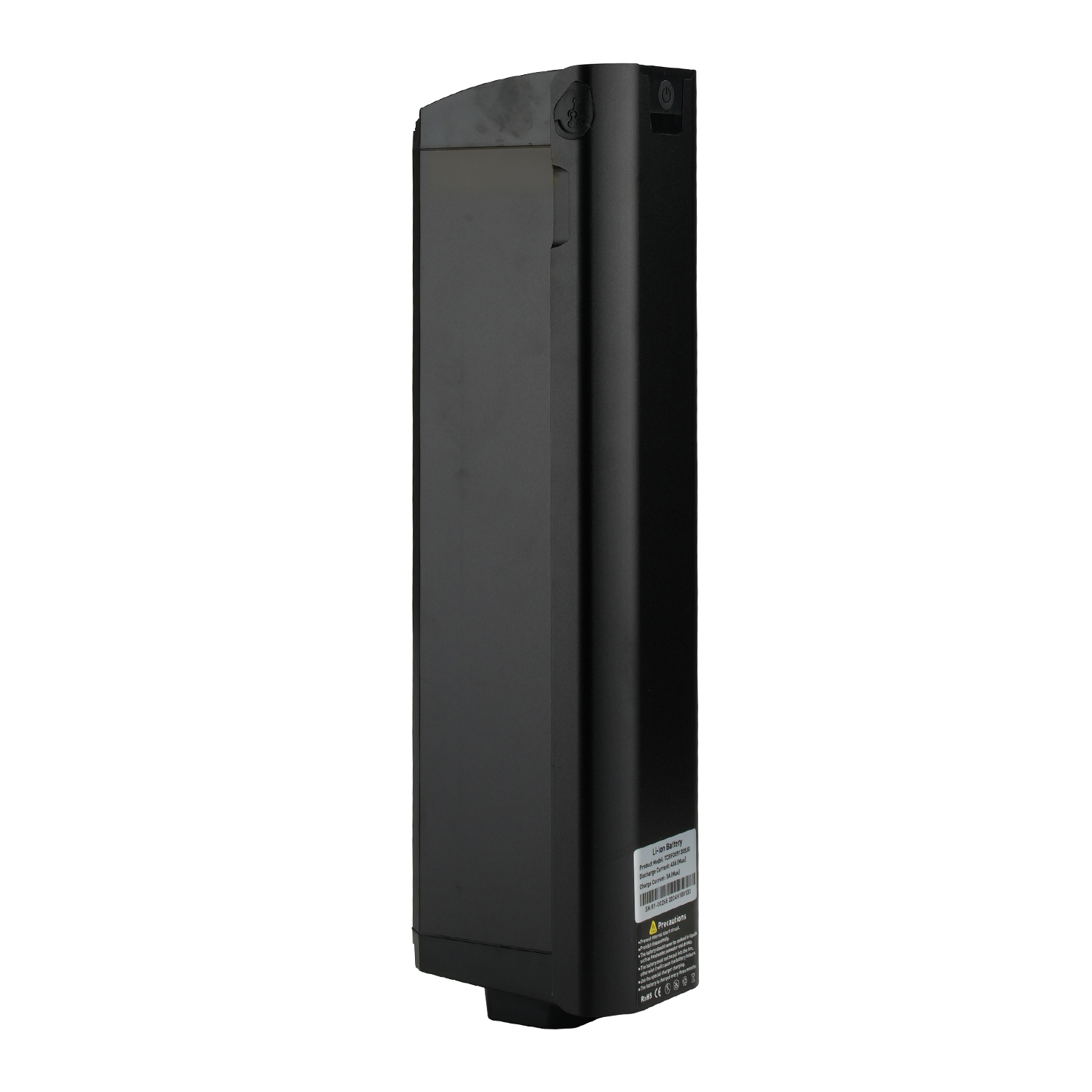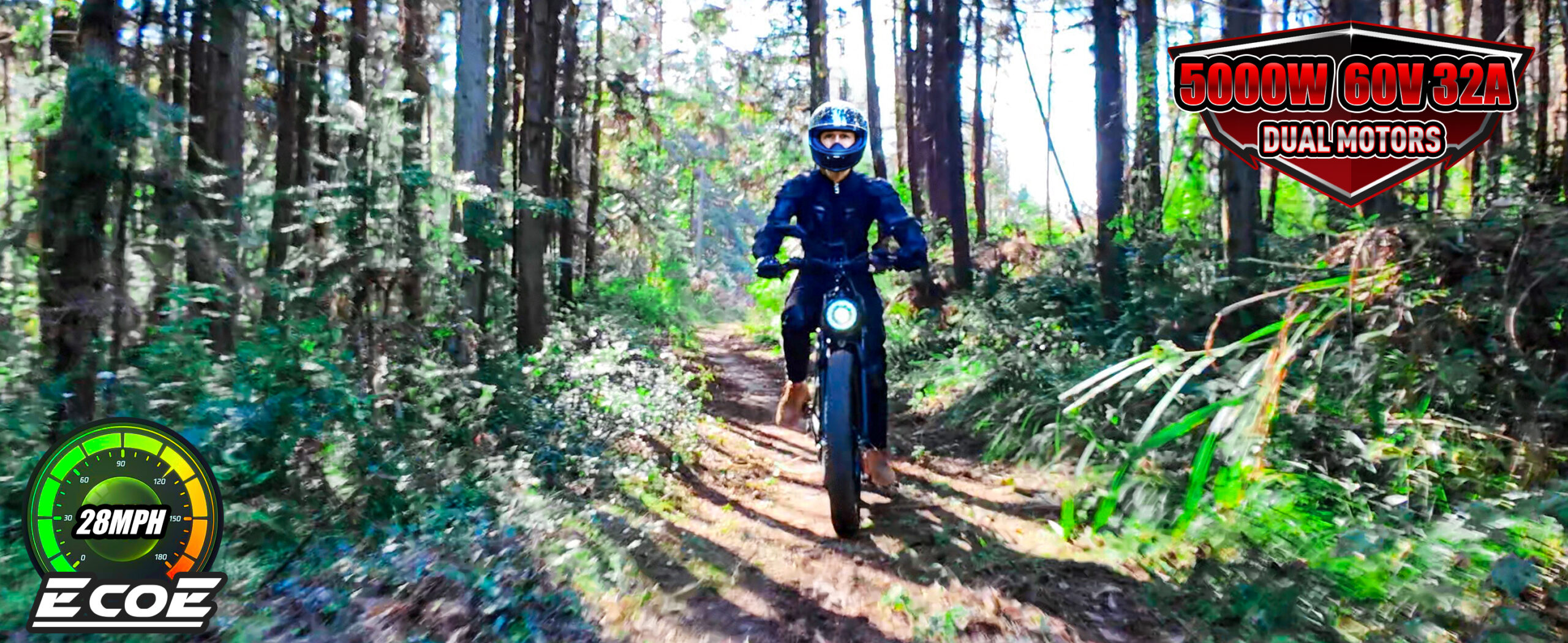
Apr 11, 2025
|
0 comments
Can an eBike Go 50 MPH? We Rode, We Wondered, We Found Out
We’d always thought e-bikes were just cool alternatives to scooters—great for commuting, zipping through parks, maybe hitting 25 or 30 mph if you’re lucky. But then someone online said their electric bike hit 50 mph. Naturally, we had questions. Can an e-bike really go that fast? Is it safe? Legal? And more importantly—what does it feel like? So, we did what any curious riders would: we tested it ourselves. The results? Eye-opening, a little scary, and definitely faster than we imagined. It all started with a Reddit thread titled: “What’s the fastest your e-bike has ever gone?”One guy commented: “Hit 51 mph on a 5000W dual motor beast. No downhill. Pure throttle.”Another replied with a screenshot: GPS tracker showing 53.4 mph. At first, we thought: No way. Maybe they had the wind at their back or were riding off a cliff. But curiosity got the better of us. We gathered our small group, a couple of high-powered bikes (5000W+, full-suspension types), checked tire pressures, tightened helmets, and found a long, open stretch just outside town. Our mission? Find out if 50 mph on an e-bike was a fantasy—or a reachable thrill. We’ll be real with you. The first time we opened the throttle, we didn’t hit 50. It was more like 39… then 42. Still fast, but not quite the mythical mark. Then we switched to another bike—one of those dual-motor setups with a 60V battery and fat tires. It took off like a rocket. We were at 30 mph in seconds, and then 45… then 50. That moment was weirdly emotional. Everything gets loud. The wind, your breathing, even your thoughts.The handlebars vibrate slightly. You’re constantly adjusting your body weight. One tiny bump in the road feels like a potential disaster.And yet—it’s addictive. Someone in our group actually yelled […]
Read more
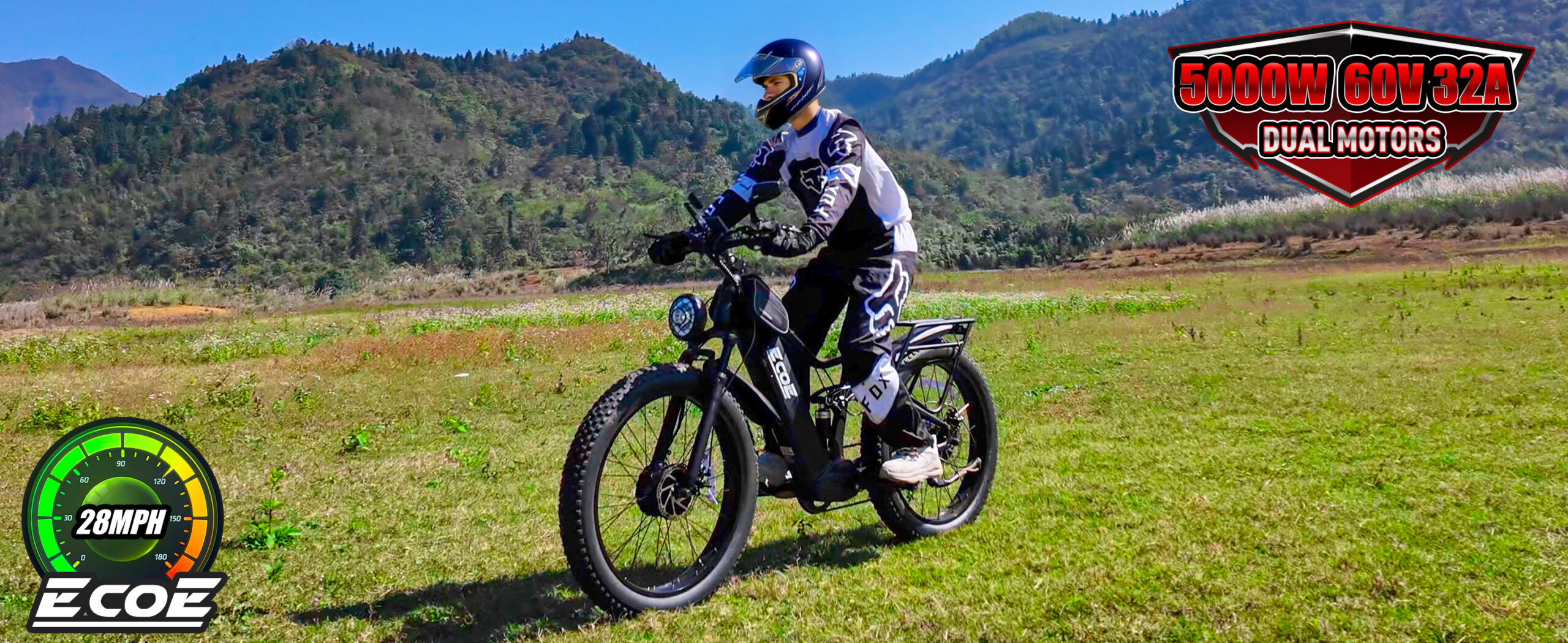
Apr 11, 2025
|
0 comments
Technical Development History of Lightweight High-Definition Maps in Electric Bicycle Autopilot (Post-2020)
The EcoE 5000W electric bike Powerful Motor: EcoE is equipped with a 60V 5000W high-speed brushless motor. Due to different loads and road conditions, the electric bike drive system provides adjustable assistance, allowing you to stay healthy, relax, and exercise.Accessories: This electric bike accessory set includes a rearview mirror, water bottle holder and bottle, a sturdy phone mount, and a waterproof phone pouch. The reinforced cargo rack allows you to easily carry extra items needed for your ride. Additionally, if you need more accessories, you can purchase a detachable storage rack, passenger safety seat, trailer, and more.60V 32AH Battery: The bike is equipped with a high-capacity, removable 32AH battery, providing longer range per charge and over 1000 charge cycles. With pedal assist, the fat tire e-bike can travel 35-80 miles, depending on riding mode, load, and terrain. You can also purchase a spare battery for extended trips.Comfort and Versatility: This fat tire electric bike comes with dual front suspension and rear shocks to reduce impact and strain during rides. Its 26-inch wheels, 4-inch tires, and SHIM 7-speed system offer excellent grip across diverse terrains. Front and rear disc brakes ensure safe, responsive stopping, whether on mountain trails or city streets. – 1. Technical Background and Core Evolution Post-2020, lightweight HD map technology achieved breakthroughs through data compression, edge computing, and crowdsourced updates, significantly reducing storage and transmission costs while maintaining centimeter-level precision. Key innovations included: 2. Key Technical Development Stages Time Period Technology Type Technical Features Application Scenarios Technical Bottlenecks 2020–2022 Crowdsourcing & AI Compression – NavInfo’s “Scenario Maps” optimized intersections using crowdsourced data (2023)– Huawei’s digital twin engine achieved 3x data compression (2022) Yamaha e-bike pilot (2021) – Data privacy compliance– Inconsistent crowdsourced data quality 2022–2024 Edge Computing & 5G-V2X Integration – NavInfo & QCraft’s “HD Lite” supported urban NOA for $15k vehicles (2024)– […]
Read more
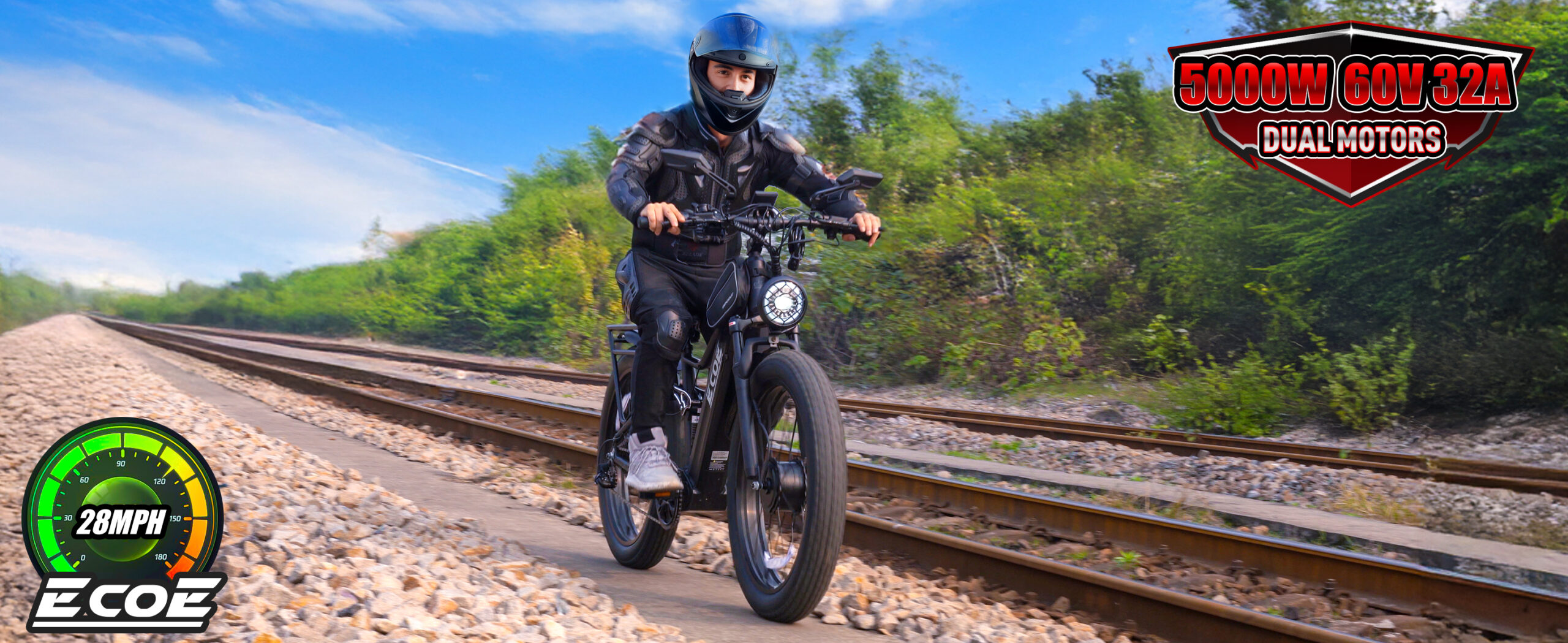
Apr 11, 2025
|
0 comments
Technical Development History of LiDAR-SLAM Integration in High-Definition Maps for Electric Bicycle Autopilot (2010-2020)
The EcoE 5000W electric bike Powerful Motor: EcoE is equipped with a 60V 5000W high-speed brushless motor. Due to different loads and road conditions, the electric bike drive system provides adjustable assistance, allowing you to stay healthy, relax, and exercise.Accessories: This electric bike accessory set includes a rearview mirror, water bottle holder and bottle, a sturdy phone mount, and a waterproof phone pouch. The reinforced cargo rack allows you to easily carry extra items needed for your ride. Additionally, if you need more accessories, you can purchase a detachable storage rack, passenger safety seat, trailer, and more.60V 32AH Battery: The bike is equipped with a high-capacity, removable 32AH battery, providing longer range per charge and over 1000 charge cycles. With pedal assist, the fat tire e-bike can travel 35-80 miles, depending on riding mode, load, and terrain. You can also purchase a spare battery for extended trips.Comfort and Versatility: This fat tire electric bike comes with dual front suspension and rear shocks to reduce impact and strain during rides. Its 26-inch wheels, 4-inch tires, and SHIM 7-speed system offer excellent grip across diverse terrains. Front and rear disc brakes ensure safe, responsive stopping, whether on mountain trails or city streets. – 1. Technical Background and Core Evolution The 2010-2020 period marked a critical transition for LiDAR (Light Detection and Ranging) and SLAM (Simultaneous Localization and Mapping) technologies, as they evolved from laboratory research to commercial applications. Key advancements in this era laid the foundation for high-definition (HD) maps in electric bicycle autopilot: 2. Key Technical Development Stages Time Period Technology Type Technical Features Application Scenarios Technical Bottlenecks 2010–2015 Mechanical LiDAR & Traditional SLAM – Velodyne HDL-64E (2007) dominated the market– Laser-based SLAM algorithms (e.g., LOAM) Google self-driving cars (2012) – High cost (>USD 75,000)– Large size (~30 cm)– Low real-time performance (<10 Hz) 2015–2018 […]
Read more
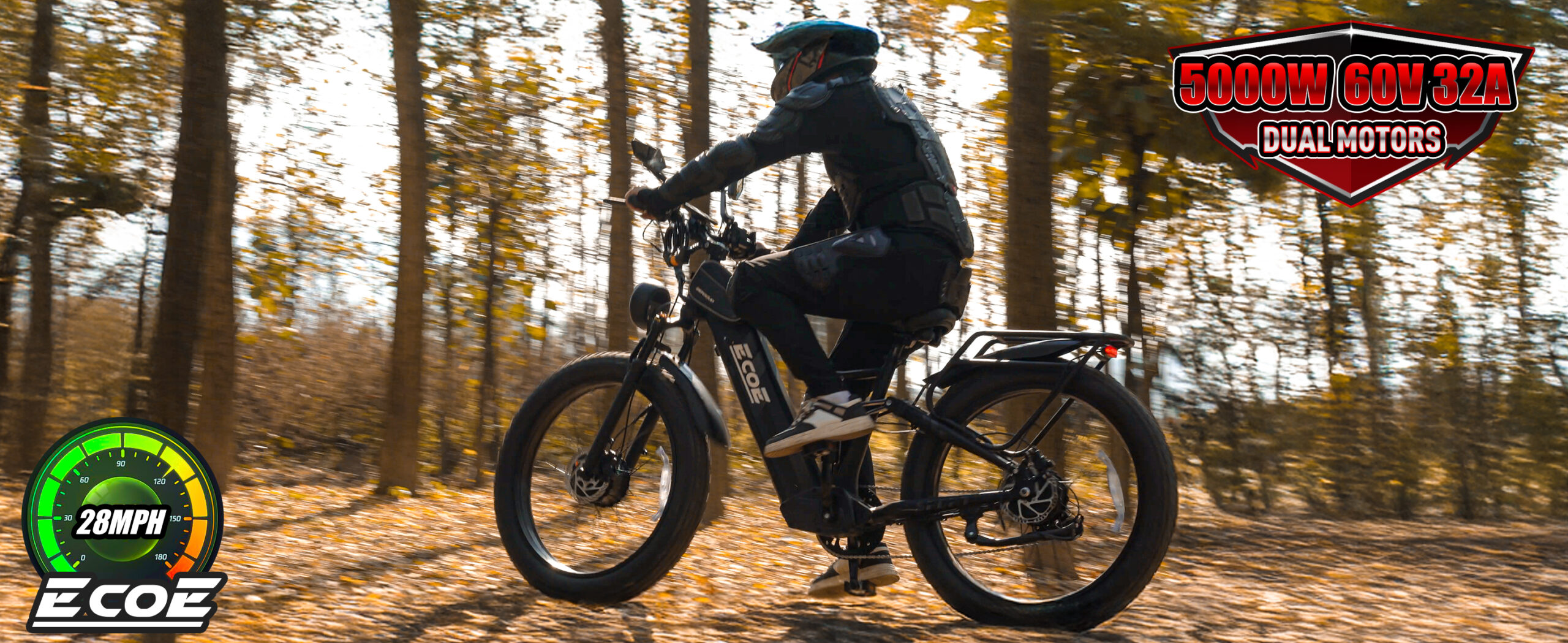
Apr 11, 2025
|
0 comments
Which electric bike has the highest top speed
“Which electric bike is the fastest?” It’s not the first time we’ve asked this question, but it’s the first time we decided to go out and actually test them. We took a lineup of high-powered e-bikes—rumored to be the fastest—out to the countryside and open roads. Helmets on, throttles wide open. Wind in our faces, hearts racing. The answer? It’s not as simple as a number—but it sure was a wild ride getting there. It all started with a friend’s throwaway comment.“E-bikes these days go faster than some motorcycles, huh?” We, being a bunch of bike nerds, instantly disagreed: “Says who? You ridden them all?”And that’s how this weekend’s little project kicked off—we’d test out some of the fastest e-bikes on the market and crown a speed king. So we took our gear and headed out—from city streets to backroads, even a few dirt trails. Clear skies, dry roads. Perfect for testing. We lined up five known “speed demons” from different brands—some American-made torque monsters, one Chinese-modified beast, and the Ecoe Electric Bike with a 5000W dual-motor setup. At first, we were joking around. Later? One of us got off the bike trembling, saying, “That wasn’t riding… that was flying.” Before heading out, we did a little research on Reddit and ElectricBikeReview. Turns out, e-bike speed is a whole underground obsession. One guy posted about his 72V, 8000W custom rig that hit 62mph—on flat land. He called it “the land rocket.” Another rider, Dave from Nevada, posted a video of his 5000W off-roader hitting 58mph in the desert. You can hear him yelling mid-ride, “Holy sh*t! It flies!”One more rider claimed his 6000W bike hit 48mph going downhill… until he hit gravel, lost traction, and tumbled into a ditch. His advice? “Speed is fun, until it’s not.” Reading all that, […]
Read more
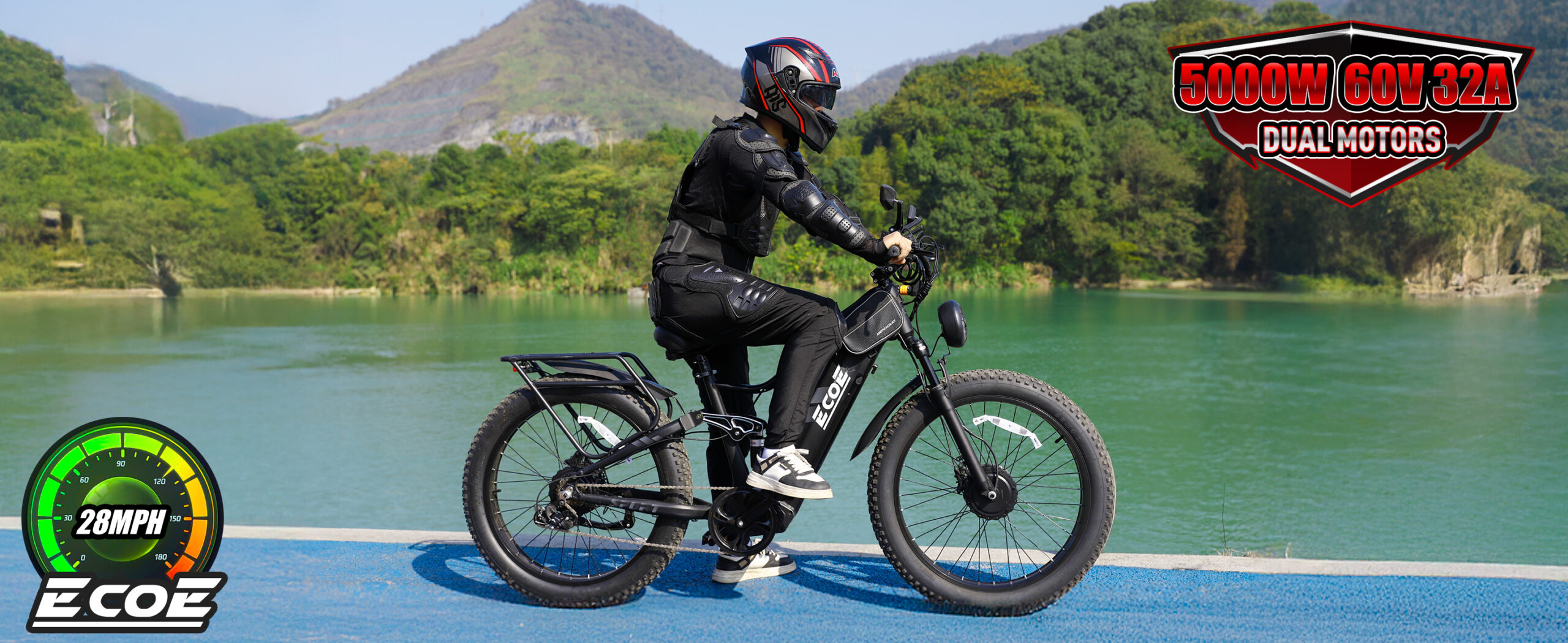
Apr 10, 2025
|
0 comments
Technical Development History of High-Definition Maps in Electric Bicycle Autopilot: Electronic Maps and GIS Expansion (2000-2010)
The EcoE 5000W electric bike Powerful Motor: EcoE is equipped with a 60V 5000W high-speed brushless motor. Due to different loads and road conditions, the electric bike drive system provides adjustable assistance, allowing you to stay healthy, relax, and exercise.Accessories: This electric bike accessory set includes a rearview mirror, water bottle holder and bottle, a sturdy phone mount, and a waterproof phone pouch. The reinforced cargo rack allows you to easily carry extra items needed for your ride. Additionally, if you need more accessories, you can purchase a detachable storage rack, passenger safety seat, trailer, and more.60V 32AH Battery: The bike is equipped with a high-capacity, removable 32AH battery, providing longer range per charge and over 1000 charge cycles. With pedal assist, the fat tire e-bike can travel 35-80 miles, depending on riding mode, load, and terrain. You can also purchase a spare battery for extended trips.Comfort and Versatility: This fat tire electric bike comes with dual front suspension and rear shocks to reduce impact and strain during rides. Its 26-inch wheels, 4-inch tires, and SHIM 7-speed system offer excellent grip across diverse terrains. Front and rear disc brakes ensure safe, responsive stopping, whether on mountain trails or city streets. – 1. Technical Background and Core Evolution The 2000-2010 period marked a critical transition for electronic maps and Geographic Information Systems (GIS), shifting from traditional navigation to intelligent, dynamic applications. Key advancements laid the foundation for high-definition (HD) maps in electric bicycle autopilot: 2. Key Technical Development Stages Time Period Technology Type Technical Features Application Scenarios Technical Bottlenecks 2000-2005 Digital Maps & CD-ROM Storage – Transition from CD-ROM to online services (e.g., Google Maps 2005)– Early path optimization algorithms (Dijkstra, A*) In-car navigation, early smartphones (e.g., Nokia N95) – Delayed data updates (weekly/monthly)– Limited coverage (major cities only) 2005-2010 GIS Systems & Dynamic Data […]
Read more
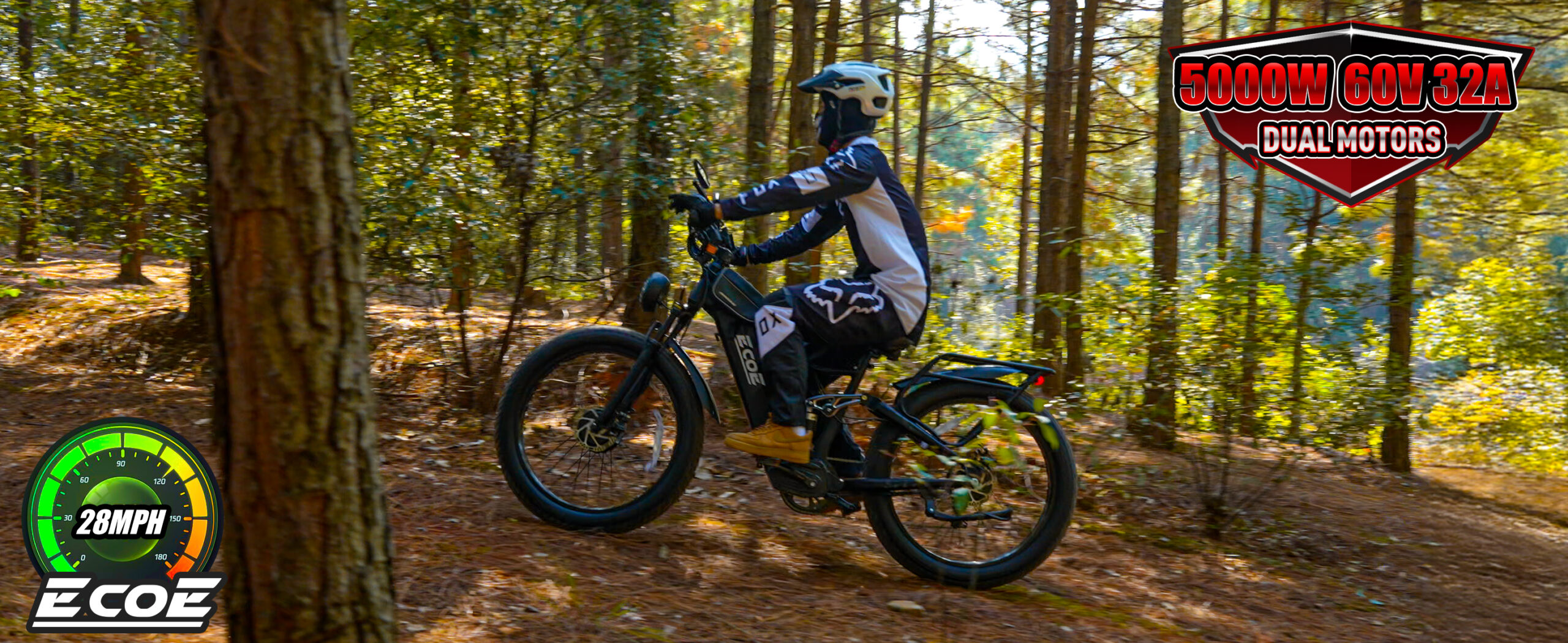
Apr 10, 2025
|
0 comments
Development History of Traditional Navigation Maps for High-Definition (HD) Maps in Electric Bicycle Autopilot (Pre-2000)
The EcoE 5000W electric bike Powerful Motor: EcoE is equipped with a 60V 5000W high-speed brushless motor. Due to different loads and road conditions, the electric bike drive system provides adjustable assistance, allowing you to stay healthy, relax, and exercise.Accessories: This electric bike accessory set includes a rearview mirror, water bottle holder and bottle, a sturdy phone mount, and a waterproof phone pouch. The reinforced cargo rack allows you to easily carry extra items needed for your ride. Additionally, if you need more accessories, you can purchase a detachable storage rack, passenger safety seat, trailer, and more.60V 32AH Battery: The bike is equipped with a high-capacity, removable 32AH battery, providing longer range per charge and over 1000 charge cycles. With pedal assist, the fat tire e-bike can travel 35-80 miles, depending on riding mode, load, and terrain. You can also purchase a spare battery for extended trips.Comfort and Versatility: This fat tire electric bike comes with dual front suspension and rear shocks to reduce impact and strain during rides. Its 26-inch wheels, 4-inch tires, and SHIM 7-speed system offer excellent grip across diverse terrains. Front and rear disc brakes ensure safe, responsive stopping, whether on mountain trails or city streets. – Traditional navigation maps laid the foundation for modern HD maps, supporting critical functions like positioning, route planning, and environmental perception in autonomous driving. Below is the technological evolution of traditional navigation maps before 2000: 1. Pre-1980s: Analog Maps and Basic Positioning Time Period Key Technologies Applications Challenges Pre-1980s – Paper maps and hand-drawn routes– Simple odometers and compass-based positioning – Manual navigation– Basic route references – Delayed information updates– Low positioning accuracy Technical Development: 2. 1980–1990s: Digitization and GPS Adoption Time Period Key Technologies Applications Challenges 1980–1990s – Digital maps (CD-ROM storage)– Civilian GPS satellite positioning – In-car navigation devices– Personal handheld navigators […]
Read more

Apr 10, 2025
|
0 comments
How Fast Do Electric Bikes Go?
How fast can an electric bike go? This question sounds simple, but to truly answer it, you really need to ride a few bikes, test them on different routes, and talk to some riders. On our recent trip, we tested a variety of e-bikes with different power ratings, experiencing everything from a leisurely cruise to speeds that felt almost airborne. We were amazed to find that depending on the settings, the “fast” of an e-bike can range from a safe commute to an adrenaline-pumping off-road adventure—one that can even outpace some motorcycles. We gathered in the suburbs of San Diego, California, where a friend brought his new 5000W electric mountain bike. As I first sat on it, I thought: Isn’t this just a bicycle with a motor? But the moment I started it, I was nearly pushed off the seat by the acceleration. That kind of “acceleration” is no joke. Especially on flat, obstacle-free roads, a single twist of the throttle easily breaks 30 mph. We all laughed on the side, saying, “This isn’t riding anymore; it’s driving.” Of course, Class 1 e-bikes for urban commuting are generally capped at 20 mph, with some Class 3 models reaching 28 mph—the highest speed limit allowed by law in many U.S. states. But the high-power bikes we rode (like the 5000W Ecoe Electric Bike) have already transcended the conventional categories and fall into the “motorcycle-like” category. During our research, we also browsed some cycling discussion forums on Reddit, where the enthusiasm for e-bikes among foreigners exceeded our expectations. A netizen named Jack from Colorado commented, “My custom e-bike reached a top speed of 52 mph, but I don’t recommend doing this; the braking system can’t handle it.” Another girl named Abby from Utah said, “My bike is 3000W; I usually ride around […]
Read more
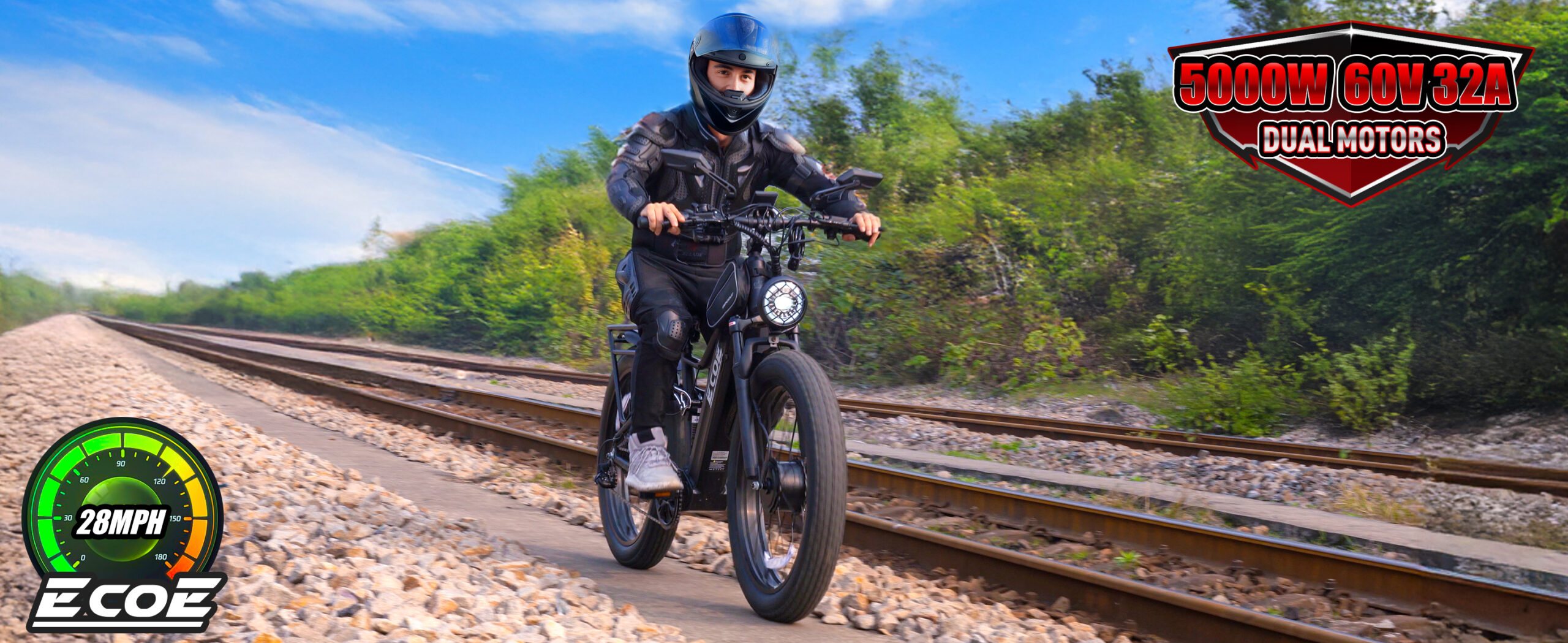
Apr 10, 2025
|
0 comments
Can an ebike go 30 mph?
Have you ever felt that e-bikes just aren’t fast enough, especially on those long, straight roads outside the city? We have, too. That’s why we decided to take on a “30 mph challenge,” setting off with a few bikes, testing and chatting along the way. The result: It’s possible, but it’s not quite the “fast” we imagined. If you’re also considering getting an electric bike that can go faster, this article might help clarify your thoughts. Our first serious test of the top speed of e-bikes was on a country road in Texas. There wasn’t much traffic and the wind was gentle, making it perfect for testing whether an e-bike could hit 30 mph. To be honest, we were initially skeptical about this number. After all, traditional Class 1 and Class 2 e-bikes have a speed limit of just 20 mph, and even Class 3 tops out at 28 mph. But one of the bikes we brought surged right up to 30 mph. The speed wasn’t exactly fast, nor was it slow. The wind whistled past our ears, and we could feel every tiny crack in the ground. It was like “surfing,” but on asphalt. We shouted to each other as we rode, “Whoa, this feels like a skateboard on the highway.” It was a complex mix of emotions—surpassed expectations yet tinged with worry. Back to reality, if you’re thinking of buying an e-bike with the expectation that it will hit 30 mph, you need to be aware—not all e-bikes can do it. For example, during our tests, we found that some so-called “high-speed” models only barely reach 30 mph under specific conditions—like light load, full battery, and downhill. The bikes that can “stably run at 30 mph” usually have a power rating of over 3000W, more aggressive controller settings, […]
Read more
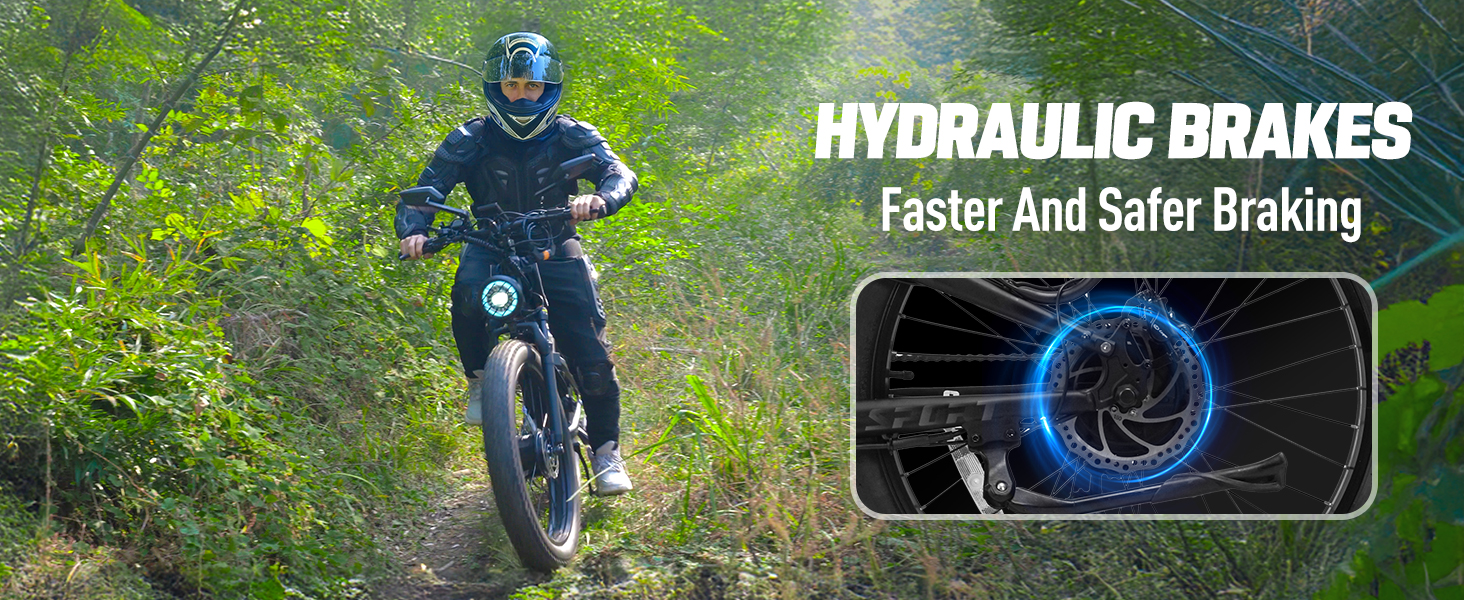
Apr 10, 2025
|
0 comments
Can e-bikes go 50 mph?
“Can e-bikes hit 50 mph?” When we first heard this question, our expressions were probably the same as yours—skeptical yet somewhat expectant. As urban commuting tools, many people subconsciously believe that electric bikes can only go up to around 20 mph. However, the field has actually undergone some significant changes quietly. So, we decided to give it a try ourselves, to see which bikes can truly reach 50 mph, what kind of people would ride them—and whether it’s really worth it. We conducted the speed test on a test track in southeastern California. On one side was an open sandy area, and on the other was a safety buffer zone enclosed by old tires—it was quite suitable for doing something “crazy.” We brought several bikes, including two high-power monster e-bikes and a 5000W Ecoe Electric Bike we were already quite familiar with. To be honest, we were all a bit apprehensive before hitting the track. After all, we usually only rode up to around 30 mph, and this time we were really going to try 50 mph, which made us nervous. The first bike out of the gate made us snap to attention. Yes, it can indeed reach 50 mph, and even exceed it a bit in areas without wind resistance. Especially with the Ecoe bike, after we switched the speed mode to “Sport+,” we watched as the speedometer shot up to 51 mph. “It’s no longer ‘riding’; it feels more like flying,” Kevin shouted from the roadside, his tone a mix of excitement and a bit of regret for not wearing armor sooner. Don’t get us wrong, it’s easy to talk tough when you’re standing on the sidelines. But when you actually get on the bike and charge up to 50 mph, your hands are shaking. Imagine speeding along […]
Read more
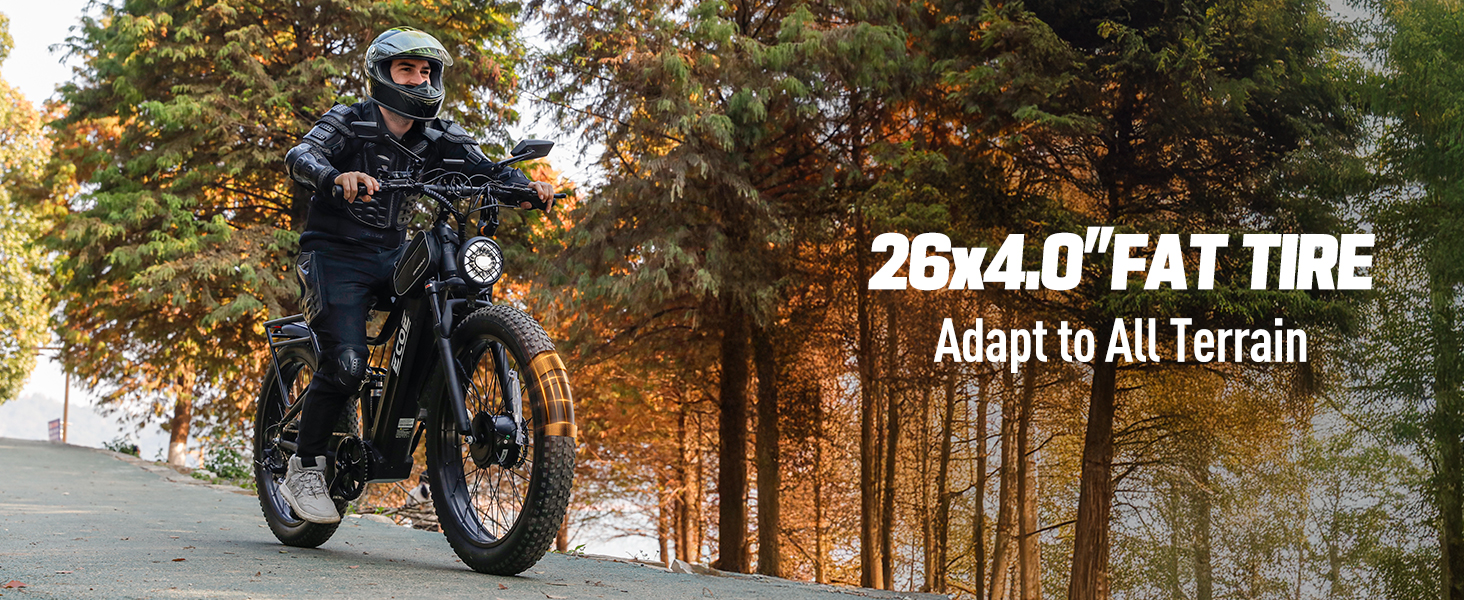
Apr 10, 2025
|
0 comments
How fast is 1000W in mph?
How fast can a 1000W electric bike go? We’ve actually been quite puzzled by this question for a while. We’ve checked forums, read manuals, and even heard exaggerated claims from friends like “it can hit 40 mph.” But it wasn’t until we actually rode several 1000W electric bikes and tested them on different terrains that we discovered there are many unexpected details behind the numbers. Below, we not only provide a realistic speed range but also take you into the world of this power segment, which is most commonly misunderstood. Our first serious contemplation of this issue was at a community e-bike exhibition in Chicago. A fellow rider named Lisa, while wiping her bike, said, “The 1000W power segment is the most overestimated. People think a thousand watts sounds pretty powerful, but once they get on the bike, they exclaim, ‘Is that all it is?'” She spoke casually, but we were quite intrigued. Just how fast can it go? Can it reach 30 mph? Can it compete with city electric vehicles? So we decided to give it a try ourselves. That day, we selected three common 1000W electric bikes on the market, with front-wheel drive, rear-wheel drive, and mid-drive motors, and tested them on a relatively flat country road outside Chicago. After the first lap, we were all bewildered. The fastest one only reached 34 mph—and that was with a tailwind and a rider weighing no more than 150 pounds. Our first feeling after the test was: “It turns out that more power doesn’t necessarily mean more speed.” This point was also confirmed by a user named Tim we met on Reddit. He said his 1000W mid-drive e-bike was faster than his friend’s 1500W rear-wheel drive bike: “I’ve adjusted the controller parameters and changed the gear ratio, and my bike […]
Read more
